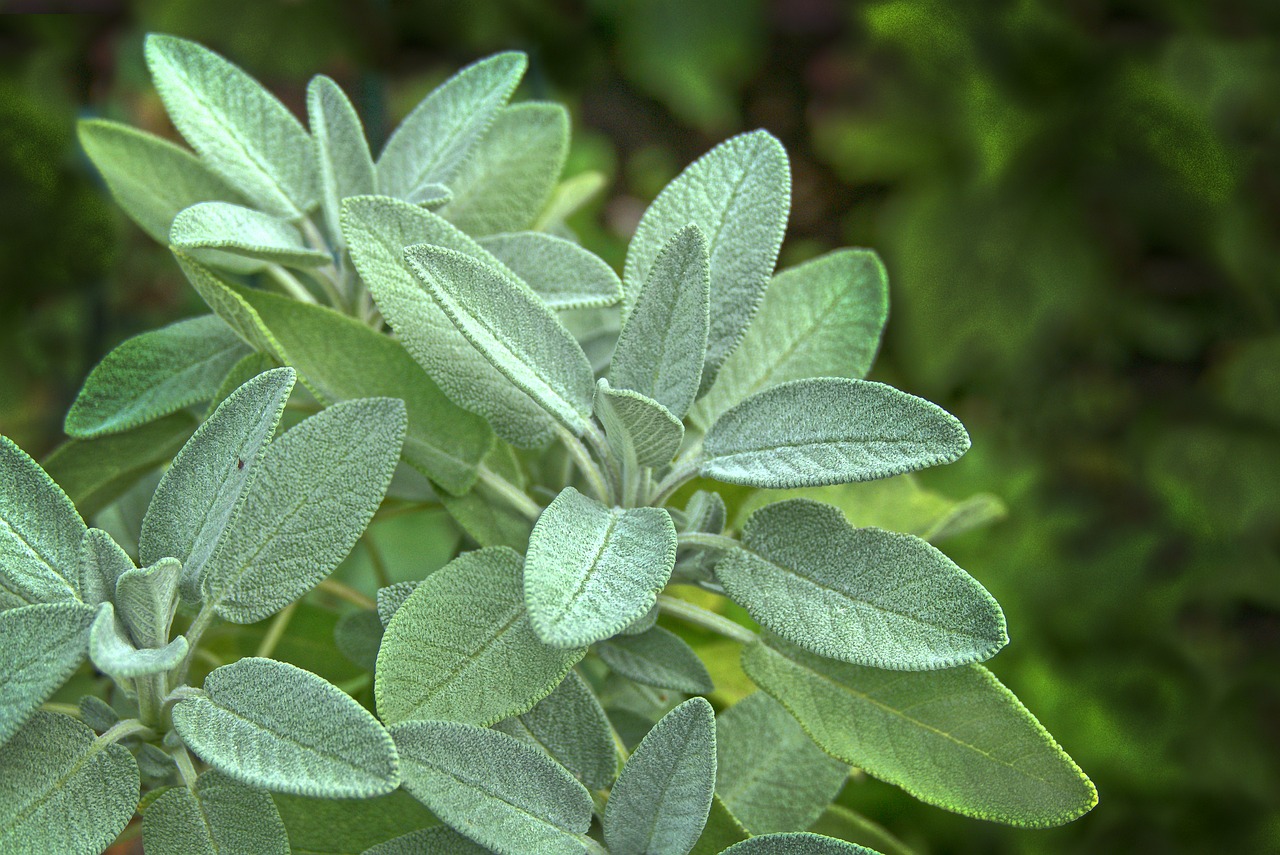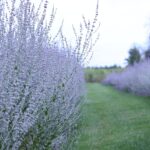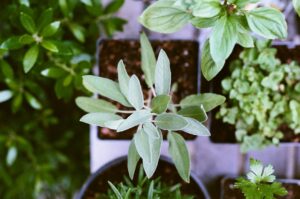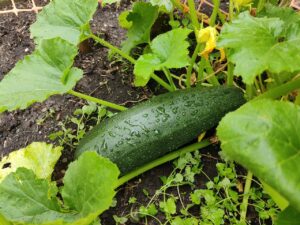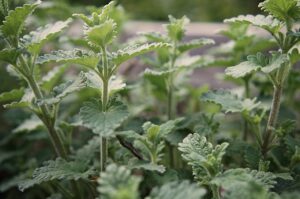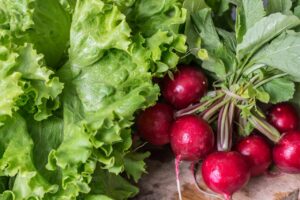Introduction
Growing sage is a joy for me, as its aromatic leaves enhance my cooking and make great tea. Sage (Salvia officinalis) is a versatile and aromatic herb that can add a delightful flavour to your culinary dishes. Growing sage in your garden is a rewarding experience and provides you with a fresh supply of this delightful herb. In this guide, we’ll take you through the process of how to grow sage, including planting sage, how to propagate sage, sage varieties, sage plant care, harvesting sage, growing salvias in pots, and sage companion plants.
-
How to Grow Sage
To grow sage successfully, you must consider several factors, such as selecting a suitable variety, soil, and location for your plant. Follow these steps to grow sage from seeds, cuttings, or transplants.
Step 1: Choose the Right Sage Variety
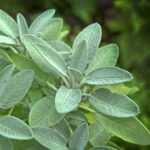
There are many sage varieties to choose from, each with its own unique flavour and appearance. Here are some popular options with a brief description of each:
- Common Sage (Salvia officinalis): Also known as garden sage, this variety has gray-green leaves and a robust, earthy flavour. It’s the most widely used variety in cooking and the go-to choice for many traditional dishes.
- Purple Sage (Salvia officinalis ‘Purpurascens’): This striking variety features purple-tinged leaves, adding a vibrant touch to your garden. Its flavour is similar to common sage but slightly milder, making it a great choice for subtle seasoning.
- Golden Sage (Salvia officinalis ‘Icterina’): Known for its variegated green and yellow leaves, golden sage adds colour to your herb garden. Its flavour is milder than common sage, with a hint of lemon, making it a refreshing addition to various dishes.
- Pineapple Sage (Salvia elegans): As the name suggests, pineapple sage has a fruity, pineapple-like scent and flavour. With bright red tubular flowers that attract hummingbirds, this variety adds beauty and a tropical touch to your garden. Use it in fruit salads, cocktails, or desserts for fruity freshness.
- White Sage (Salvia apiana): Native to the southwestern United States, white sage is known for its silvery-white leaves and strong, aromatic scent. While not commonly used for culinary purposes, white sage is often used in smudging ceremonies to cleanse and purify spaces. Its leaves can be used sparingly in cooking for a bold, unique flavour.
Russian Sage - Russian Sage (Perovskia atriplicifolia): Although not a true sage, Russian Sage is a popular ornamental plant that shares the same family as the salvia species. It has silvery-gray, finely dissected leaves and tall spikes of lavender-blue flowers that create an ethereal, airy effect in the garden. While Russian Sage is not typically used for culinary purposes, it is prized for its beauty and drought-tolerant nature, making it an excellent addition to a water-wise landscape or a visually stunning garden border.
- Painted Sage (Salvia viridis): Distinguished by its vivid bracts that encircle modest flowers, this captivating variety comes in hues of pink, purple, and white, creating a mesmerizing visual effect in your garden. Although not commonly used in cooking, painted sage’s primary appeal lies in its ornamental charm and its suitability as a cut flower for eye-catching arrangements. Embrace the radiant beauty of painted sage to infuse your outdoor space with an artistic and sophisticated touch.
Step 2: Select the Ideal Location
Sage prefers full sun and well-draining soil. Choose a location that receives at least 6-8 hours of sunlight daily. If you’re growing salvias in pots, ensure the containers have drainage holes to prevent waterlogging.
Step 3: Planting Sage
Prepare the soil
Sage thrives in well-draining soil with a pH level between 6.0 and 7.0. Enrich the soil with organic matter, such as compost or aged manure, and loosen it to improve drainage.
Planting Sage
Once you’ve chosen your sage variety and prepared the soil, it’s time to plant your sage. You can either start sage from seeds, cuttings, or transplants.
- Seeds: Sow seeds indoors 6-8 weeks before the last expected frost. Lightly cover the seeds with soil, and keep the soil moist but not saturated. Germination usually takes 14-21 days.
- Cuttings: Take 4-6 inch cuttings from an established sage plant, remove the lower leaves, and dip the cut end in rooting hormone. Plant the cuttings in a well-draining soil mix and keep them moist until roots develop.
- Transplants: Plant purchased or propagated transplants in your garden after the danger of frost has passed, spacing them approximately 18-24 inches apart.
-
How to Propagate Sage
Sage can be propagated through seeds, cuttings, or by dividing established plants. Propagating sage through cuttings or division ensures that the new plants will be true to the parent plant’s characteristics.
-
Sage Plant Care
To keep your sage plants healthy and productive, follow these sage plant care tips:
- Watering: Sage is drought-tolerant, so be careful not to overwater. Allow the soil to dry out between watering sessions.
- Pruning: Regular pruning encourages bushier growth. Trim back your sage plants by one-third in the early spring or after flowering.
- Fertilizing: Apply a balanced, slow-release fertilizer in the spring to support plant growth.
- Pests and diseases: Sage is relatively pest-resistant, but keep an eye out for aphids, spider mites, and whiteflies. To control these pests, use organic methods, like neem oil or insecticidal soap.
-
Harvesting Sage
You can begin harvesting sage leaves once the plant has reached about 8 inches in height. To ensure the best flavour and potency, it’s ideal to pick leaves in the morning after the dew has evaporated but before the heat of the day sets in.
When harvesting, snip off individual leaves or small sprigs as needed; be careful not to remove more than a third of the plant at a time. This helps maintain the plant’s health and encourages new growth.
If you’re planning to dry your sage, harvest larger amounts just before the plant begins to flower, as this is when the concentration of essential oils is at its peak. To dry sage, tie small bundles of sprigs together and hang them upside down in a well-ventilated, dark, and dry area.
-
Growing Salvias in Pots
Growing sage in pots is a great option for those with limited garden space or for those who want to add a touch of greenery to their balconies or patios. To grow salvias in pots, follow these guidelines:
- Choose a container: Select a pot at least 12 inches in diameter with drainage holes to prevent waterlogging. Terra-cotta or ceramic pots are ideal, as they allow for better air circulation and moisture evaporation.
- Soil: Use a well-draining, loamy potting mix that is slightly acidic to neutral in pH (6.0-7.0).
- Watering: Water your potted sage regularly, but allow the soil to dry out between watering sessions. Potted plants tend to dry out more quickly than those in the ground, so keep an eye on the moisture levels.
- Fertilizing: Feed your potted sage with a balanced, slow-release fertilizer at the beginning of the growing season.
- Location: Place your potted sage in a sunny location with at least 6-8 hours of direct sunlight daily.
-
Sage Companion Plants
Growing sage alongside other plants can enhance your garden’s beauty and provide various benefits, such as pest control and improved soil quality. Some excellent companion plants for sage include:
- Rosemary: Rosemary and sage have similar growing conditions and can be planted together to create a fragrant and visually appealing herb garden.
- Lavender: Lavender’s strong scent can help deter pests, and its vibrant purple flowers contrast sage’s green foliage.
- Thyme: Thyme is a low-growing, ground-covering herb that complements sage’s upright growth habit, making them ideal companions in the garden.
- Cabbage family plants: Sage can help deter cabbage moths and other pests that attack cabbage, broccoli, cauliflower, and other brassicas.
Related Links:
- How to Grow Lavender: A Comprehensive Guide
- How to Grow Thyme: The Ultimate Guide
- How to Grow Cabbage: Your Complete Guide to Success
Conclusion
Growing sage in your garden or in pots is a rewarding experience that provides you with a fresh supply of this versatile and aromatic herb. By following the tips and guidelines provided in this article, you can successfully plant, propagate, and care for your sage plants, ensuring a bountiful harvest of fragrant leaves to enhance your culinary dishes. So, get started on your sage-growing journey today and enjoy the benefits of this wonderful herb.

